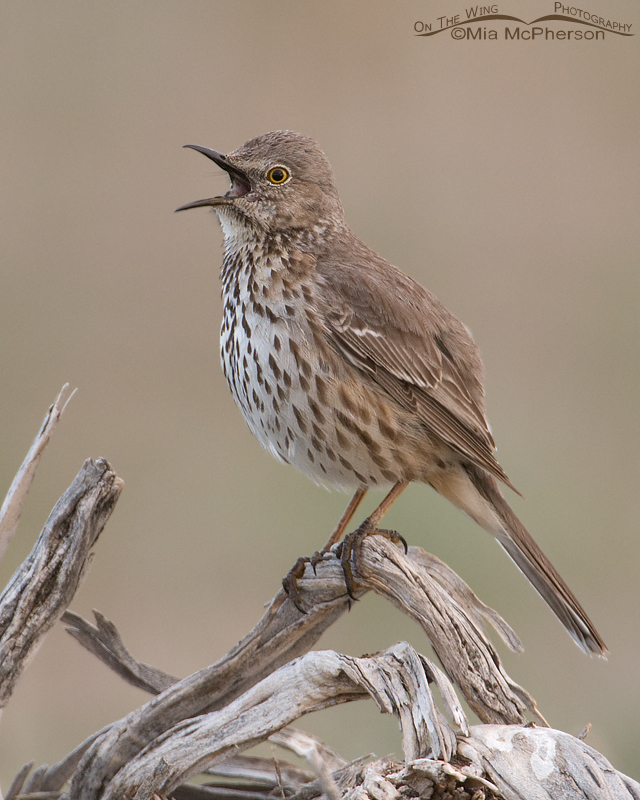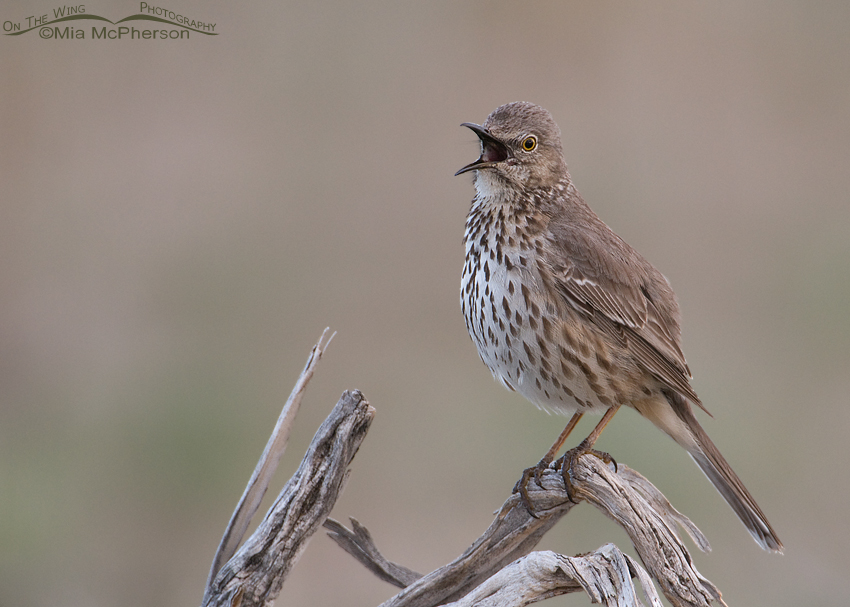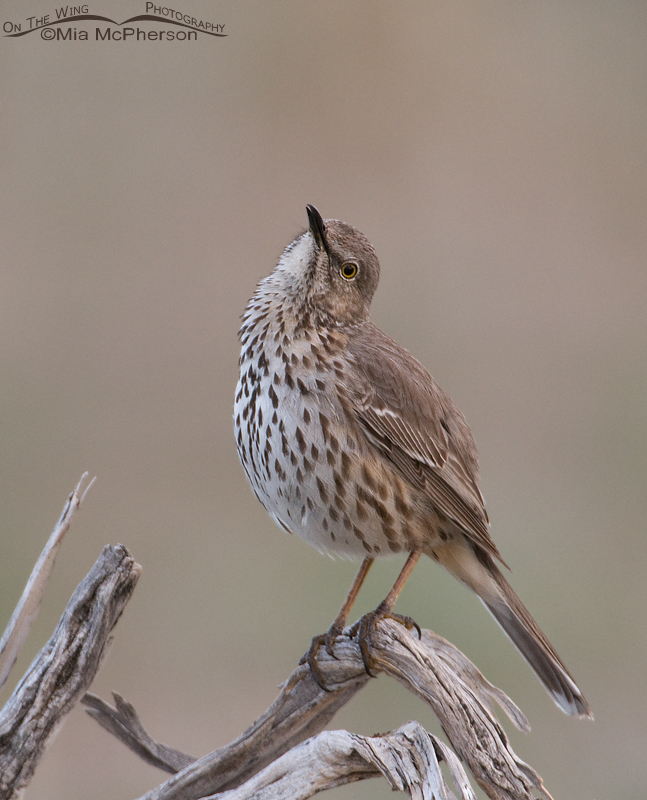 Sage Thrasher singing on Antelope Island State Park – Nikon D300, f6.3, 1/125, ISO 640, +0.3 EV, Nikkor 200-400mm VR with 1.4x TC at 400mm, natural light, not baited or called in
Sage Thrasher singing on Antelope Island State Park – Nikon D300, f6.3, 1/125, ISO 640, +0.3 EV, Nikkor 200-400mm VR with 1.4x TC at 400mm, natural light, not baited or called in
I spent some time yesterday on Antelope Island State Park photographing and listening to a very cooperative and melodious Sage Thrasher. The light was not the best because of clouds blocking the morning rays of the sun but the bird kept singing so I kept photographing it. Its not like bad light has ever stopped me before. 🙂 Sage Thrashers are often called the Mockingbirds of the Sagebrush and they are probably more closely related to mockingbirds than they are thrashers.
 Singing Sage Thrasher – Nikon D300, f6.3, 1/160, ISO 640, +0.3 EV, Nikkor 200-400mm VR with 1.4x TC at 400mm, natural light, not baited or called in
Singing Sage Thrasher – Nikon D300, f6.3, 1/160, ISO 640, +0.3 EV, Nikkor 200-400mm VR with 1.4x TC at 400mm, natural light, not baited or called in
This Sage Thrasher was singing from the top of an old stump of a dead Sagebrush close to the road, this stump is a favorite of Western Meadowlarks too.
 Sage Thrasher looking up – Nikon D300, f6.3, 1/200, ISO 640, +0.3 EV, Nikkor 200-400mm VR with 1.4x TC at 400mm, natural light, not baited or called in
Sage Thrasher looking up – Nikon D300, f6.3, 1/200, ISO 640, +0.3 EV, Nikkor 200-400mm VR with 1.4x TC at 400mm, natural light, not baited or called in
Sage Thrashers and Northern Mockingbirds are from the same family and they can mimic the sounds of other birds, in fact yesterday I thought I was hearing another Sage Thrasher in different location on the island but it turned out to be my first of the year Northern Mockingbird!
You can listen to the song of the Sage Thrasher here, they sing during the day but will also sing throughout the night especially during a full moon.
Sage Thrashers are currently listed by the IUCN as a species of least concern but a recent study by the USGS suggests that climate change may affect their habitat and could cause a 78% decline in their overall population.
I’m glad the Sage Thrashers are back on Antelope Island because I enjoy listening to them and photographing them is great too.
Mia
Click here to see more of my Sage Thrasher photos plus facts and information about this species.


Hi Mia,
I loved those pictures!
Len
Wow I’m going to have to look for these birds around here too. Put a yellow breast on it and would almost look like a meadowlark. Nice shots as always.
Nice shots! I’ve only seen them once up in the Sierra in CA.
Strangely enough, I think the perch & the background, which were in the same color vicinity as the bird, served to highlight the bird & its patterns & textures. Lovely. =)
He’s gorgeous and the soft lighting is really nice.
Thank you for sharing your delightful, and productive, morning.
That one was very expressive. I like the perch too.
This bird was certainly cooperative! and the lack of great light did not prevent you from acquiring some great shots of the bird. Perch, poses and BG are all wonderful.
Lovely photographs of a beautiful bird, Mia. Happy Easter!
(I agree with Utahbooklover. If we don’t do something soon about global warming, all bets are off.)
Let’s hope steps are taken to slow climate change, which is mostly a negative impact, including this “bird of the sagebrush, the Sage Thrasher is the smallest of the thrashers,” as you point out. (The quote is from your link to hear their beautiful songs). Thanks for the link and this beautiful set of images for this beautiful Easter Day.
Beautiful portrait!
Gorgeous bird and wonderful photos, Mia! Happy Easter!